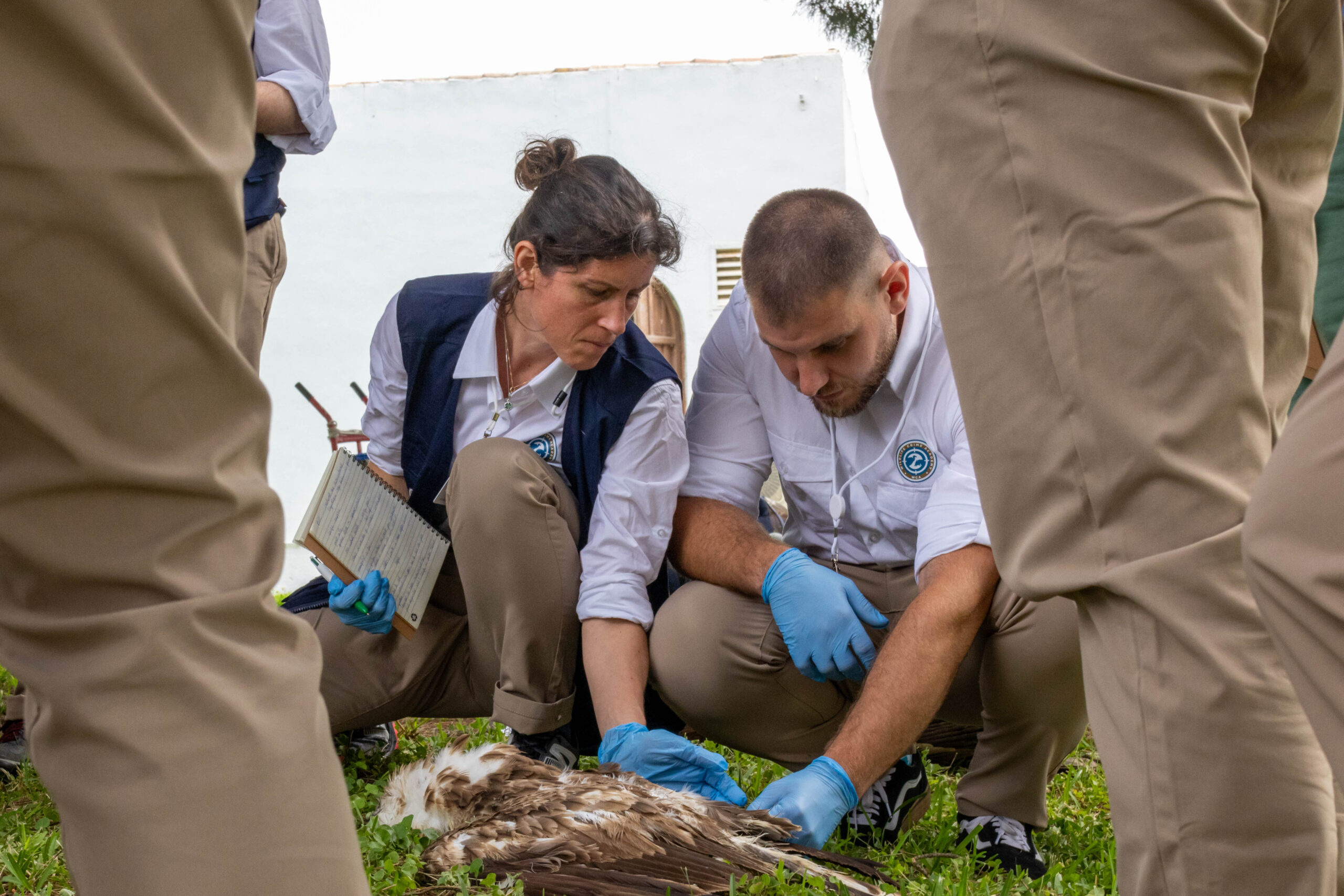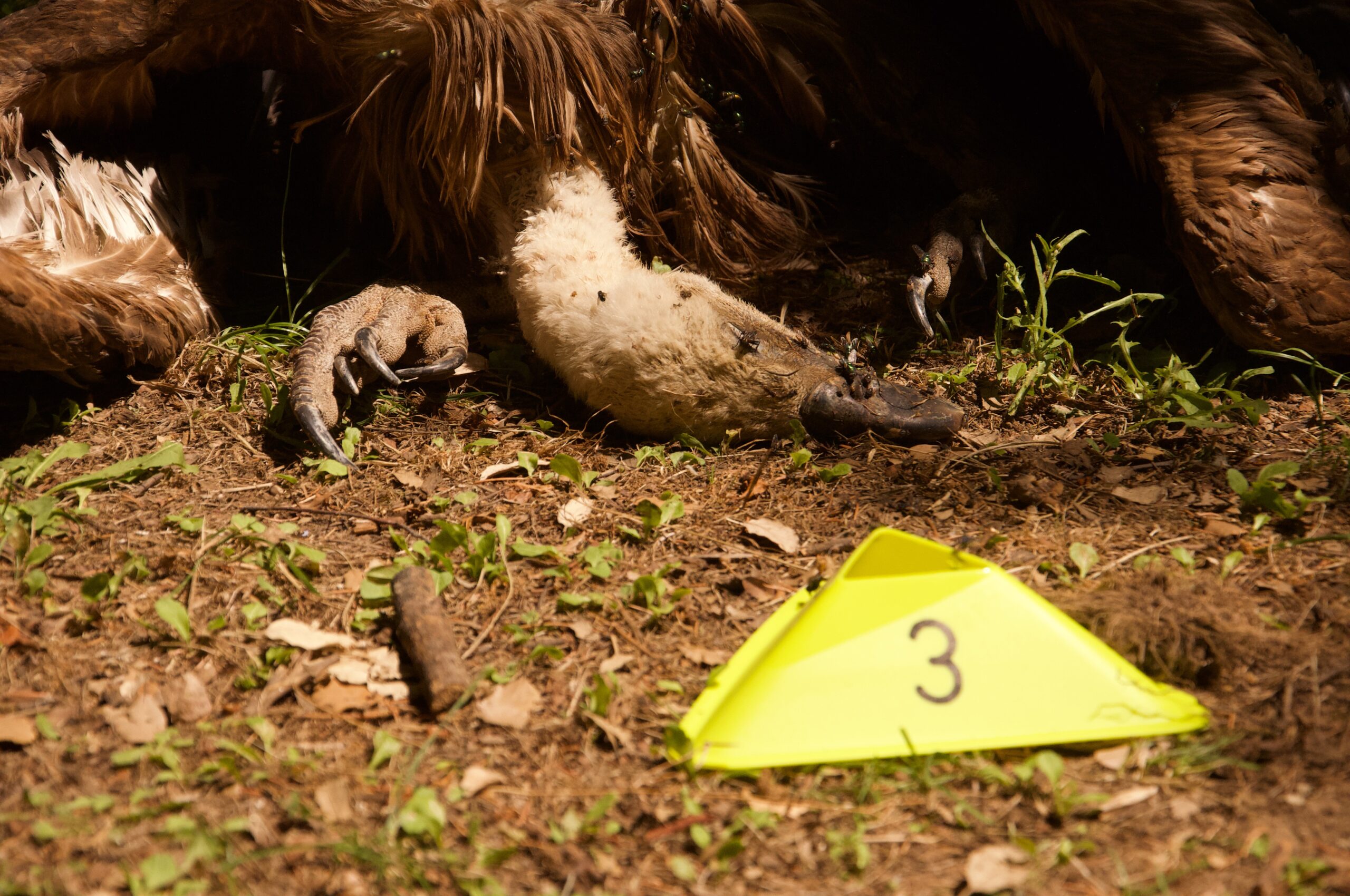
Optimistic news — a historic Griffon Vulture colony in Greece that has been abandoned for 30 years is once again active, with several nests recorded!
Griffon Vultures nest again in Empesos
An extremely promising event transpires in the area of Empesos, Aitoloakarnania (Mountains of Valtos) in Greece as a historical colony of Griffon Vultures that has been abandoned since the late ’80s made a comeback! Not only is this colony active, but it’s also quite dynamic since 8-9 nests were recorded in the area according to the systematic monitoring efforts carried out by the Hellenic Ornithological Society (HOS) within the framework of LIFE IP-4 Natura. In fact, one of the birds that mated this year in Empesos is “Giannis”, one of the two only surviving Griffon Vultures from last year’s catastrophic poisoning incident in Klisoura. Conservationists can identify Giannis since the bird was equipped with identification rings and a GPS transmitter before its release by the Management Body of Messolonghi lagoon – Akarnanian Mountains with the support of the Balkan Anti-Poisoning Project (BAPP) – Small Grants Programme. This news shows us that historical colonies can be recolonised and must be considered potentially active to allow for proper management of relevant conservation actions. This event also signifies the wider pattern of Griffon Vulture recovery in the Balkans, no doubt a result of several targeted conservation efforts, especially mitigating the threat of poisoning.
Griffon Vultures in Greece
The Griffon Vulture population in Greece has suffered a severe decline in recent decades in terms of population size and distribution. The current population of Griffon Vultures in mainland Greece amount to over 30 pairs spread across colonies in western and north-eastern parts of the country. The species has experienced a steep population decline in the country since the 1940s. In the 1980s, the population of the species was estimated at 400-450 breeding pairs with about 200 of them occurring in Crete. The plight of the Griffon Vulture continued at the turn of the 21st century, with several colonies having been wiped out in the last decade, such as Kalamas Gorge, Pineios Gorge, Nestos Gorge and Valtos Mountains — the colony that has now made a return. The main reason behind this decline is undoubtedly the illegal practice of wildlife poisoning. The dramatic population decline has unfortunately been confirmed after the recent serious and larger case of poisoning in the country that ever happened. After that case of 2012 in the Straits of Nestos, on 12 February 2020, another massive poisoning was recorded in the area, with 11 Griffon Vultures found as victims, of which 9 were found dead in Arakinthos and 2 that survived were treated and returned to the area for release.
Tackling poisoning in Greece and the Balkans
Several conservation initiatives and projects are tackling illegal wildlife poisoning, vultures’ biggest threat, in Greece and other Balkan countries including the Egyptian Vulture New LIFE project, LIFE RE-Vultures and the new BalkanDetox LIFE project led by us at the Vulture Conservation Foundation (VCF) aiming to strengthen national capacities to fight wildlife poisoning and raise awareness about the problem across seven Balkan countries. To address the most pressing conservation issue affecting numerous threatened wildlife species in the Balkan Peninsula, BalkanDetox LIFE strives to shift the perceptions and behaviour of all relevant stakeholders, from the decision-makers to the general public and the actual users of poison baits.



